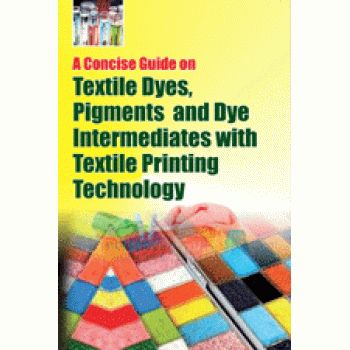A Concise Guide on Textile Dyes, Pigments and Dye Intermediates with Textile Printing Technology
| Price: | Rs.1,675.00 |
Detail Of A Concise Guide on Textile Dyes, Pigments and Dye Intermediates with Textile Printing Technology
| ISBN | 9789381039205 |
| Pages | 512 |
| Language: | English |
| Product Code: | 1 |
| Size(in cm): | 21*13.5 cm |
| Weight(in grams): | 500(approx) |
Description:
In the past, only organic matter was available for making dyes. Today, there are numerous options and methods for the colorization of textiles. While today’s methods capitalize on efficiency, there is question as to whether the use of chemicals is harmful to the environment. A reputation for harming the earth could be detrimental to a company in a society becoming more and more focused on the environment and its preservation. Today, with the invention of synthetic materials used in textiles, many new types of dyes have been developed and put into regular use. There are two basic ways to color textiles: dyes and pigments. Pigments are not a dye but rather resins mechanically bound to fibers. Dyes are divided into classes according to the types of fibers they are most compatible with.Textile printing is related to dyeing but, whereas in dyeing proper the whole fabric is uniformly covered with one color, in printing one or more colors are applied to it in certain parts only, and in sharply defined patterns.Dyes will yield the softest hand (the "hand" is the feel of the fabric) and maintain the fabric's luster but the process is expensive. Pigments are much more economical to use. Pigments are generally more lightfast, more colorfast, and give greater color control. Pigment technology has developed tremendously in the past 15 years. 85% of the textile printing in the World is pigment printing.This book contains manufacturing process and other related details about Azine dyes, Azoic dyes, Azo dyes, Thiazole dyes, Triphenylmethane dyes, scientific classification of Vat dyes, fluorination of dyes, different types of pigments, applications, usages of dyes and pigments, quality control and evaluation of pigments and many more. This book will serve as a guide to Textile Technologists, Scientists and existing as well as upcoming industries.
Reviews (0)
Write a review
Your Name:Your Review:
Note: HTML is not translated!
Rating: Bad Good
Enter the code in the box below:



 |
| 